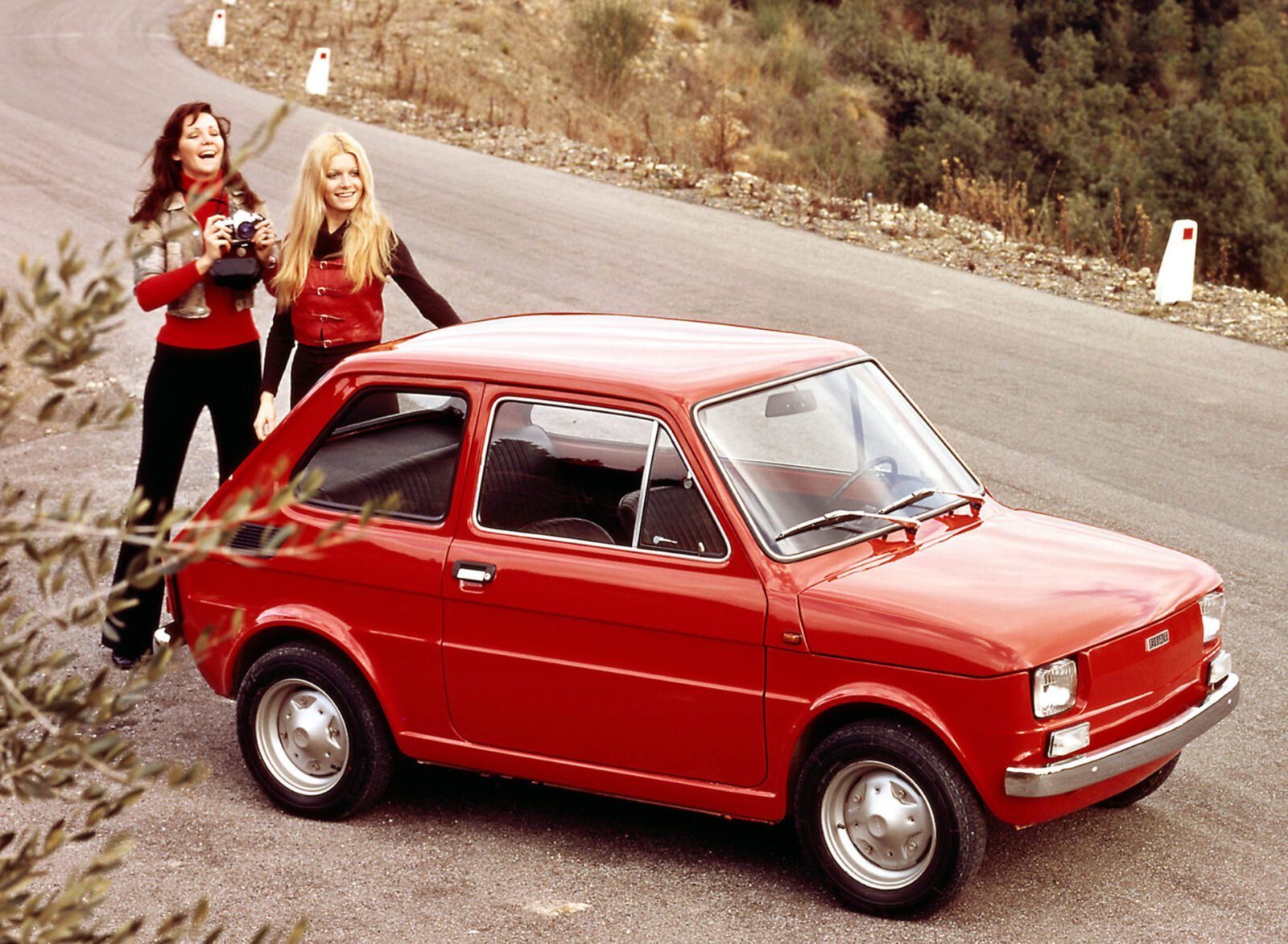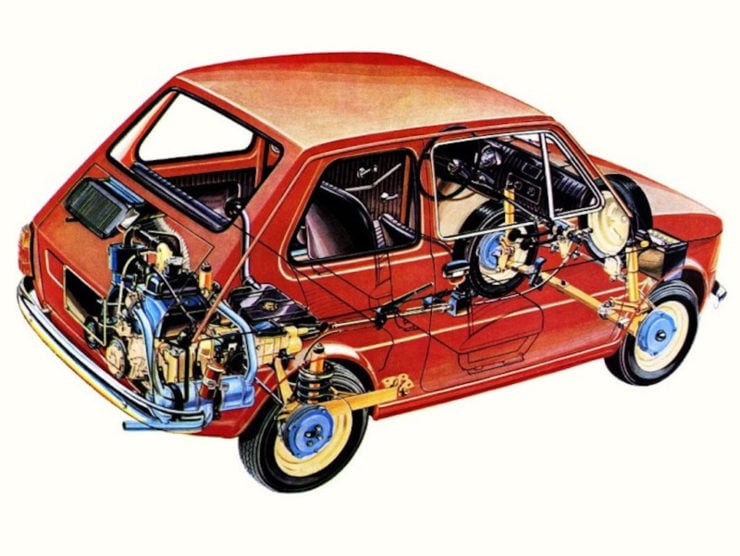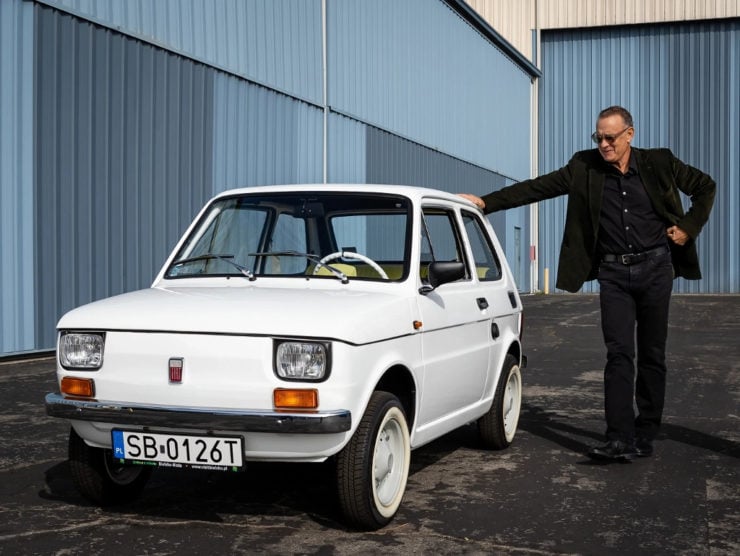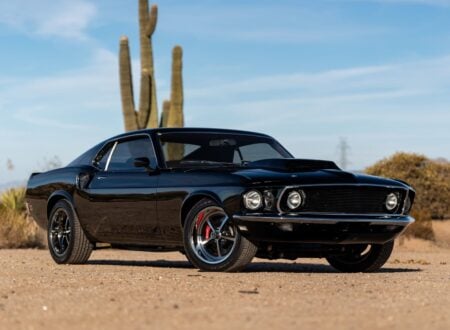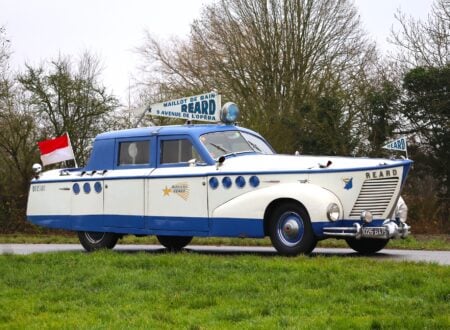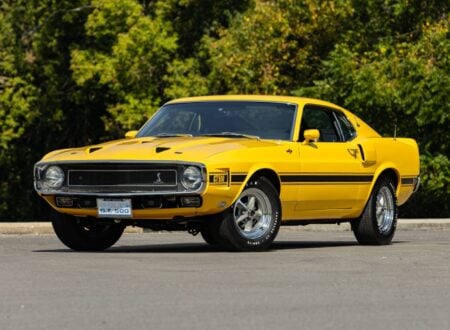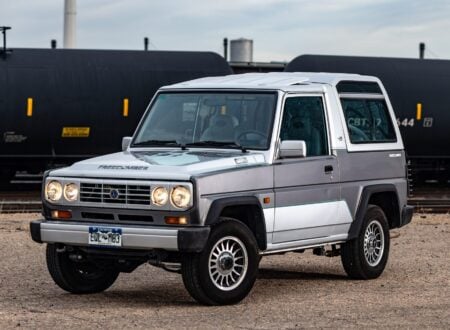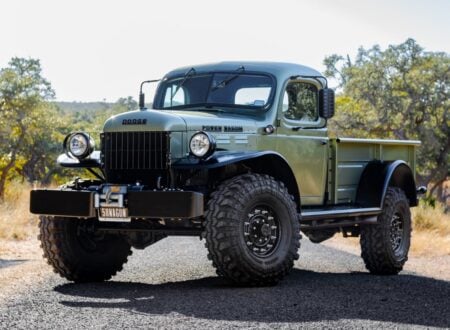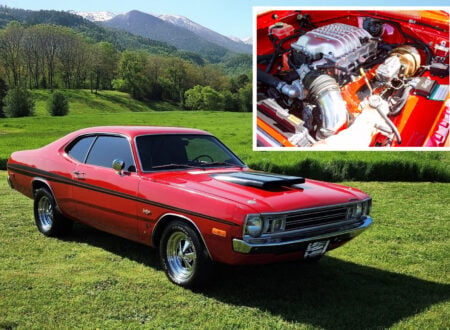This Fiat 126 is a period competitor for the likes of the British Mini that’s been seeing its popularity climb in recent years. The beautifully proportioned design coupled with the rear engine, rear wheel drive layout and independent front and rear suspension offers spirited driving fun on even the slimmest of budgets.
Due to the fact that millions of 126s were made during the model’s long production run they remain affordable, and perhaps more importantly, spare parts are both plentiful and inexpensive. The 126 offers a solid alternative to the Mini, and it remains one of the best loved compact classics in Europe.
Fast Facts – The Fiat 126
- The Fiat 126 found its biggest market in Eastern Europe where 3.3 million were made and sold.
- The car was made in Poland from 1972 until 2000 and was given the popular nickname “Maluch”, which means “Little one” or “small child”.
- American actor Tom Hanks first encountered the Fiat 126p “Maluch” while he was working on a movie in Eastern Europe and he was so attracted to it that he tweeted about the car and his tweets made their way to Polski Fiat. Polski Fiat decided to have a custom “Maluch” created for him, which they then presented to him.
- On the dashboard of Tom Hanks custom “Maluch” is a plaque with a quote from Forrest Gump: “My momma always said life was like a box of chocolates. You never know what you’re gonna get.”
Simple, Cute, And Wildly Popular
Some people do not desire an exotic high performance sports car, nor do they drool over the latest Mercedes AMG SUV or anything else big, powerful and luxurious. Instead they just want a car that’s easy to drive, simple to work on, and miserly cheap to run. Added to that if the car has a dose of cute personality then that’s all the better.
To aficionados of simple, cute and cheap the epitome of desirable cars have included the Fiat “Bambino” in 500 and 600 forms, and the iconic British Mini – the 1960’s original which was created by Leonard Lord’s British Motor Corporation, because at that time he was mortified that so many British people were driving around in three wheeled “bubble cars” such as the Isetta, Heinkel, and the Messerschmidt.
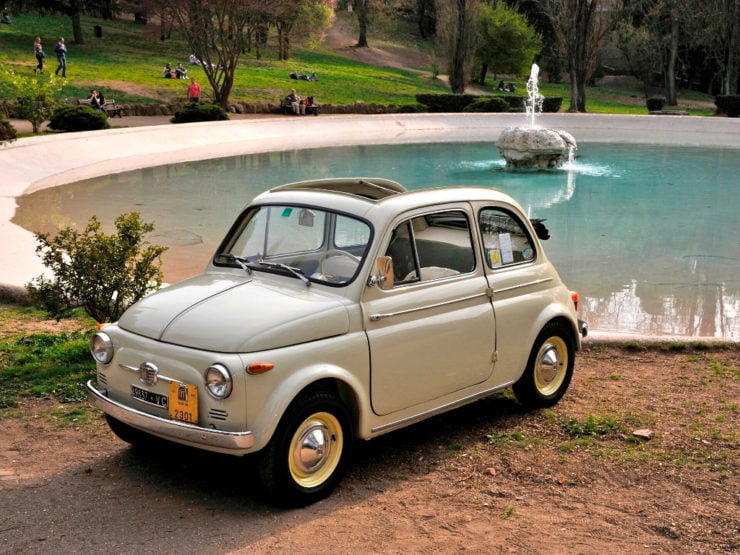

I wonder how many recognized the irony of British people driving around in little three wheeled cars made by Heinkel – who made so many of the aircraft that bombed London during the Blitz, and Messerschmidt, who made the Bf109 fighters that dueled against the Spitfires and Hurricanes of the RAF during the Battle of Britain?
So it was that BMC designer Alex Issigonis was charged with responsibility to create a “real car” that Britons could afford, and the Mini was born and became hugely popular while the bubble cars faded away because they just couldn’t compete with it.
By the second half of the 1960’s Fiat Motors in Italy could see that their hugely popular Fiat 500 “Bambino” could do with an update, but they wanted to stay as much as possible with the mechanics of the Fiat 500, just updating the body to give it a fresh appearance and character.
I think they wanted a car that could compete with the Morris Mini and that is what they created. It was a Mini size car which was perfectly at home negotiating the narrow winding roads around the Amalfi Coast or Rome’s back streets, although it wasn’t quite the ideal car for traveling the Autostrada – except in the slow lane of course.
Fiat 126 – The Design
The job of designing the new body style was entrusted to Fiat’s in-house designer Sergio Sartorelli, who had worked for Ghia, Chrysler, and OSI (Officine Stampaggi Industriali), before taking the job at Fiat. Perhaps the most outstanding of Sartorelli’s creations had been the utterly gorgeous Maserati 5000 GT, of which just thirty four were made, and one of which had been owned by the Shah of Iran.
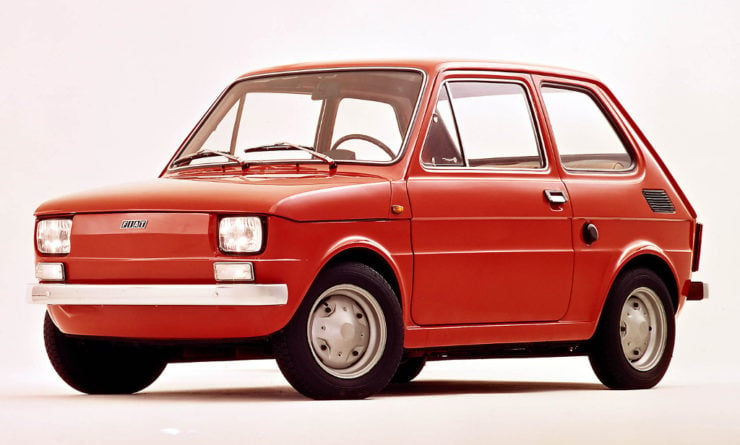

Sartorelli’s design for the humble Fiat 126 needed to look 1970’s modern, and yet have an attractive character about it. He succeeded in that beautifully and the little Fiat 126 would go on to be manufactured in Italy by Fiat, in Poland by Polski Fiat, in Yugoslavia by Zastava, and in Austria by Steyr Puch.
The 126 proved to be astoundingly popular, in part because it was so inexpensive to buy, easy to drive, easy to maintain, and cheap to run. Fiat built 1,352,912, Polski Fiat made 3.3 million, Steyr Puch assembled 2,069 from imported CKD (Completely Knocked Down) kits. The total number of cars made was 4,673,655: which is rather a lot of “Bambino’s”.
The Fiat 126 was built with a monocoque unibody, with the floorpan design taken from the original Fiat 500. To this the engine, transmission, suspension and steering components were attached. The front suspension used a transverse leaf spring with upper “A” arms and telescopic shock absorbers, making it semi-independent. At the rear were trailing arms formed into a “V” ensuring triangulation and thus positively locating the rear wheels. The rear springs were coils with telescopic shock absorbers. Steering was by worm and roller and brakes were drums all around.
Fiat 126 – The Models
The Fiat 126 first entered production in 1972 and was initially fitted with a rear mounted, air cooled, 23hp 594cc inline twin cylinder petrol/gasoline air cooled engine mounted vertically. The transmission was a four speed manual with synchromesh on the top three gears only. In late 1977 the capacity of this engine was increased to 652cc by increasing the bore from 73.5mm to 77mm. This did not change the power output much, it increased from 23hp to 24hp, but boosted the torque from 29lb/ft to 32lb/ft.
The Polish version of the 126 entered production in 1973 and these cars were initially assembled from Fiat produced parts. Polski Fiat expanded into full local production and the car was then named Fiat 126p. These cars featured amber coloured turning indicators and hazard warning lights to comply with local regulations while the Italian made cars had white turning indicator lights.
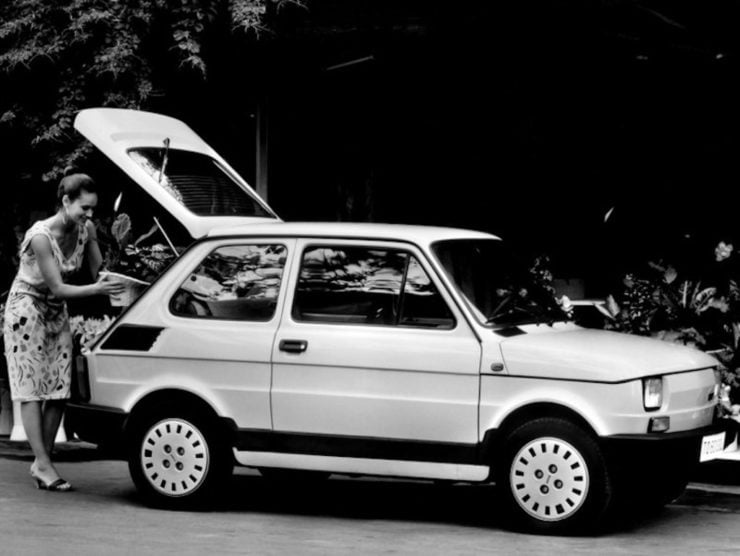

At the end of 1984 the design of the Fiat 126 in all markets was modified with the pretty chrome bumpers being replaced with plastic ones and addition of other black trim.
There was also a convertible roof model created which was available in Europe and other markets.
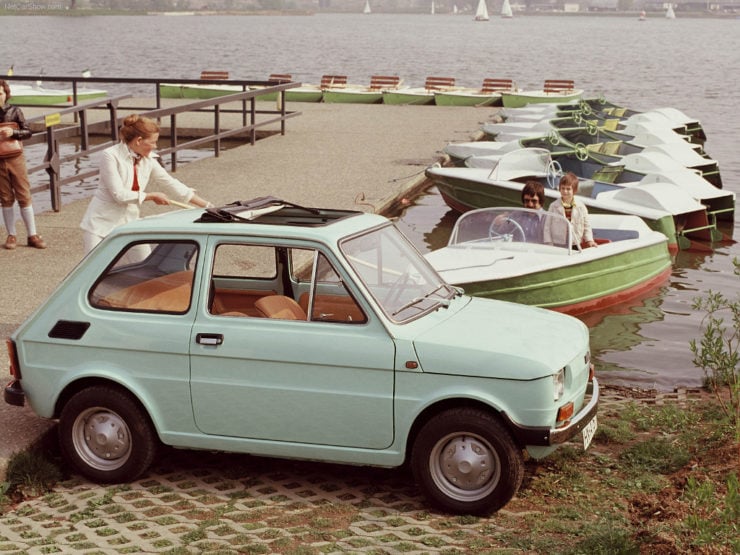

In Poland the Fiat 126 became immensely popular and developed the elusive “coolness” factor which saw it emerge as a cultural icon – in a similar way to which the Morris Mini in Britain did. The Fiat 126p gained the Polish nickname “Maluch”, which is pronounced “Malux” and translates as “small one” or “small child”. It was a name that became so popular that Polski Fiat made “Maluch” the formal name of the car in 1997.
As the Fiat 126p “Maluch” was not exported to the United States Americans were generally unaware of its existence. That is until Tom Hanks made his way to Hungary for the filming of the movie “Inferno” where he discovered the cute little car and he instantly appreciated its “coolness”. He sent out tweets about the car while he was in Eastern Europe and the tweets eventually made their way around the world to the offices of Polski Fiat in the city of Bielsko-Biała.
Management at Polski Fiat decided to create a special custom Maluch for Tom Hanks complete with one of Forrest Gump’s sayings: “My momma always said life was like a box of chocolates. You never know what you’re gonna get…”
To create it they took an original 1974 Polski Fiat 126p which had been meticulously restored by BB garage and featured a custom interior by Carlex Design, with pale green leather upholstery complimented by black inlays in the seats and other black trim pieces.
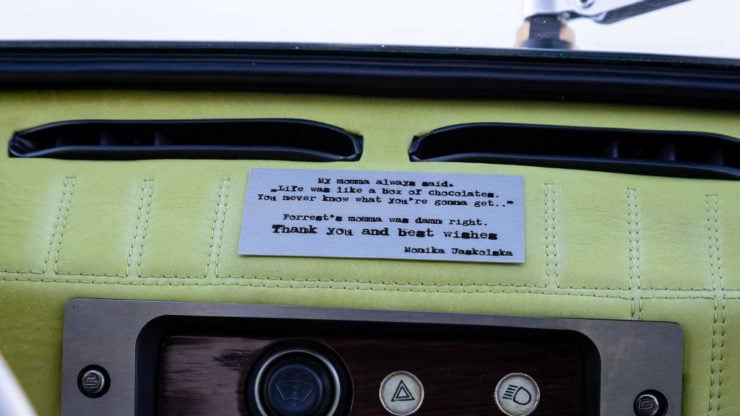

In 1987 a new version of the Fiat 126 was created: the Fiat 126 BIS. This model featured a different engine sourced from a Lancia design. It was a horizontal water cooled engine of 704cc capacity and these engines were made in Poland. This new model did not replace the original Fiat 126p but was manufactured alongside it.
Fiat 126 – Specifications
Body
Pressed steel unibody. Two door coupe. Optional convertible sun roof. Fiat 126BIS model was a three door hatchback made from 1987-2000.
Length: 3,054mm (120.2″).
Width: 1,378mm (54.3″).
Height: 1,302mm (51.3″).
Track: 1,135mm (front), 1170mm (rear).
Wheelbase: 1,840mm (72.4″).
Curb Weight: 580kg-619kg (1,279lb-1,365lb).
Fuel tank capacity: 21 litres, 4.6 Imperial Gallons, 5.5 US Gallons,
Suspension
Front: Transverse leaf spring with with upper “A” arms and telescopic shock absorbers. (thus it is a semi-independent suspension system).
Rear: Trailing arms formed into a “V” ensuring triangulation and thus positively locating the rear wheels. Coil springs with telescopic shock absorbers.
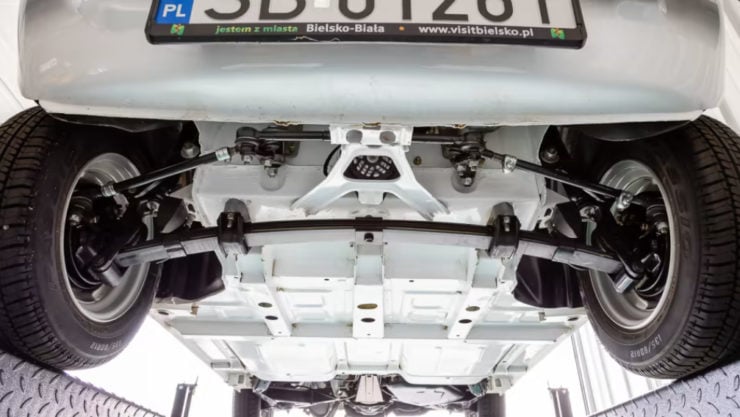

Steering
Worm and Sector system on Italian made cars, rack and pinion on Polish made cars. Turning circle 9.2metres (30.2 feet)
Brakes
Drum brakes all around. Brakes were progressively upgraded over the years especially for cars made during the 1980’s.
Engines and Production Car Models
- 1972-1977: 594cc vertical inline air cooled OHV two cylinder petrol/gasoline engine. Power of 23hp. Torque of 29lb/ft.
- 1977-2000: 652cc vertical inline air cooled OHV two cylinder petrol/gasoline engine. Power of 24hp. Torque of 32lb/ft.
- 1987-2000: 704cc horizontal inline water cooled OHV two cylinder petrol/gasoline engine. Power of 25hp. Torque of 36lb/ft.
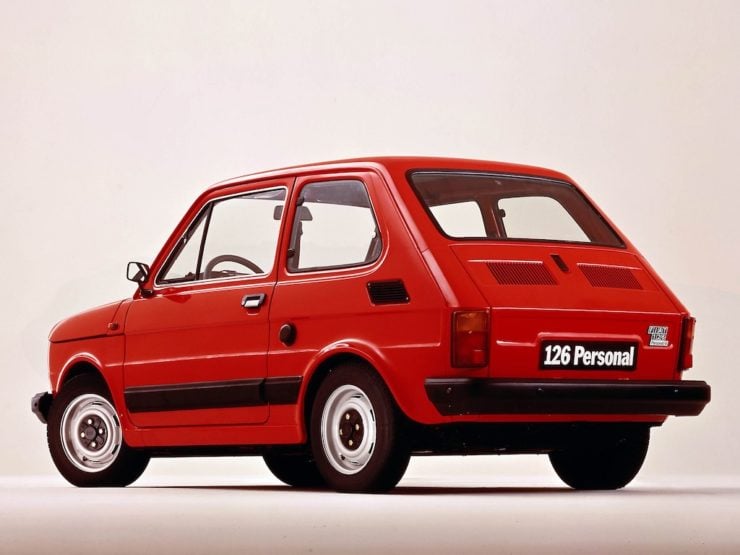

Transmission
Four speed manual transmission with synchromesh on the top three gears. The non synchromesh first gear is a straight cut gear with a reputation for fragility. So it is recommended that it only be engaged if the car is stationary – i.e. don’t trust your double de-clutch skills on this gearbox.
Performance
Standing to 60 mph in about 33 seconds
Standing to 100 km/hr in about 37 seconds
Standing quarter mile in 24 seconds.
Fuel consumption: 5.4 litres per 100 km, 52.3 miles to the Imperial Gallon, 43.5 miles to the US Gallon
Top Speed: Around 105 km/hr to 116 km/hr depending on model and engine fitted.
Buying A Fiat 126
These cars were made to be owner repairable and so became popular not only in Europe but especially in ex-communist bloc Eastern Europe where money was short and people needed to be self-reliant.
As with most mass production cars of this era expect the rustproofing not to have been particularly well done. The Italian made cars tend to rust rather more readily than the Polish ones.
So a thorough check for rust is essential. Look in all the places where mud and/or moisture may have lodged and use a magnet to detect filler used to hide or “repair” rust. Be aware that the front fenders of Italian made cars are not interchangeable with the ones for Polish made ones so if you need to buy new ones ensure you get the correct ones.
One place to check for rust is in the rear trailing arms.
The engines do not have a reputation for high mileage so be careful to check any potential purchase for wear and beware of alloy components used in the water cooled engine of the 126BIS. Some of these cars will have had their engine replaced with a motorcycle engine if that is legal in their jurisdiction.
Above Video: This episode of The Late Brake Show with Jonny Smith focusses on the Fiat 126, and shows why it became such an important car, particularly in Italy and Eastern Europe.
The Fiat 126 electrical system is fairly simple but check for its condition. Test that everything works, check the wiring for physical deterioration, and check contacts. Early cars had a 35 amp alternator while later ones were upgraded to 45 amp. 35 amp equipped cars will be slower to charge after starting and so there’s more risk of you finishing up with a flat battery if you use the car for frequent short runs.
Parts for these cute little cars are typically reasonably easy to find: a bit of Googling will normally turn up what you are looking for. Most parts – with the notable exception of the front fenders – are interchangeable between the Italian and Polish made cars.
One other consideration if you are planning on buying one of these cars is the sort of use you are planning for it. The Fiat 126 is very small and light, and offers little collision protection. If you compare its size with a small modern car like a Toyota Yaris or Prius you’ll be able to appreciate just how tiny it is.
It is a bit small for use on modern roads, especially the motorways or freeways around major cities which you have to share with SUVs and trucks. So if you have roads that are suitable for a very small car with little crash protection that you can use it on then the little Fiat 126 could be a lot of fun. People have driven their Fiat 126 home to Britain from Italy successfully, so it can be done.
The Fiat 126 is a sweet little fun machine. If you do go ahead and buy one, and you do your due diligence, it promises to provide you with a lot of enjoyment.
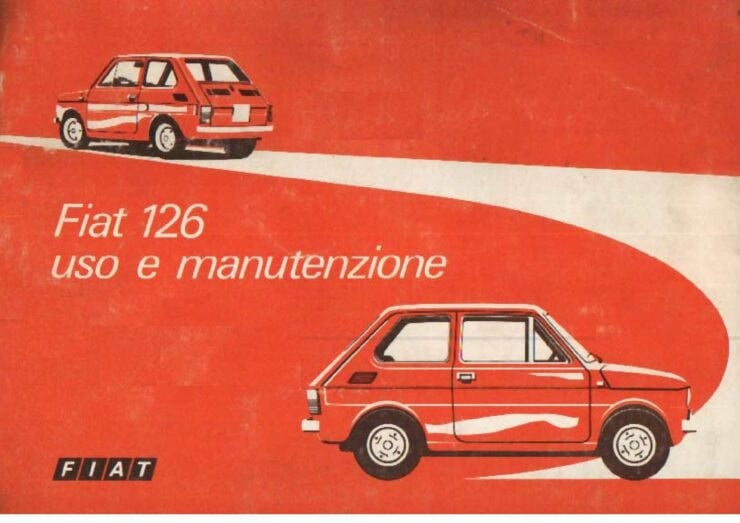
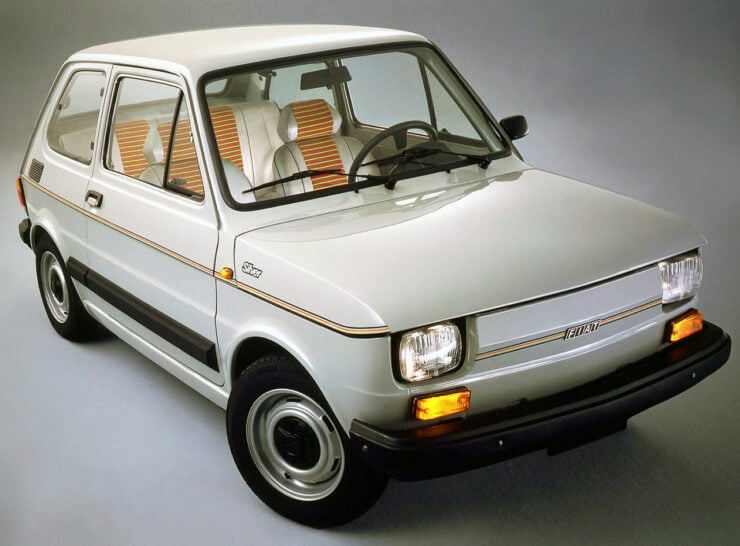
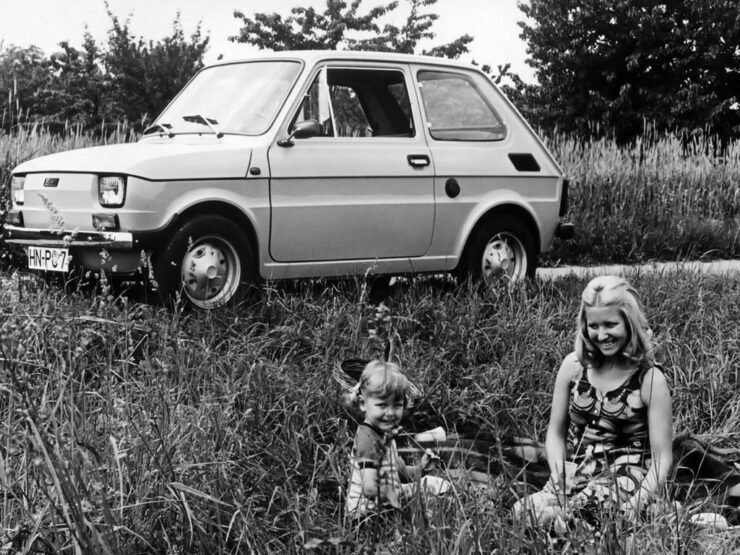
Photo Credits: Fiat, Polski Fiat, R.M. Sotheby’s.

